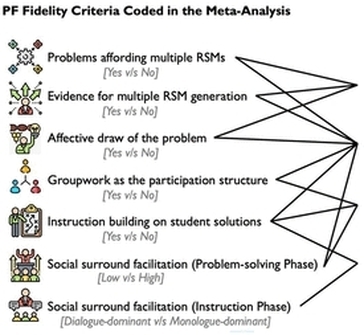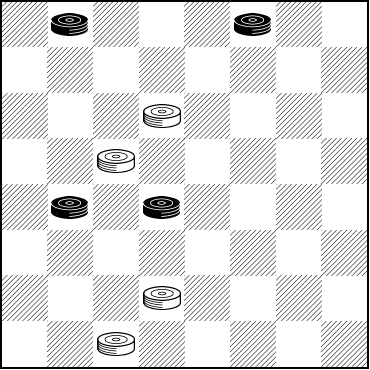The Checker Maven
Jump to navigationPS-I or I-PS

In today's Checker School column, we're going full-bore academic. Here's the abstract from a recent paper entitled When Problem Solving Followed by Instruction Works: Evidence for Productive Failure by Tanmay Sinha and Manu Kapur.
"When learning a new concept, should students engage in problem solving followed by instruction (PS-I) or instruction followed by problem solving (I-PS)? Noting that there is a passionate debate about the design of initial learning, we report evidence from a meta-analysis of 53 studies with 166 comparisons that compared PS-I with I-PS design. Our results showed a significant, moderate effect in favor of PS-I (Hedge's g 0.36 [95% confidence interval 0.20; 0.51]). The effects were even stronger (Hedge's g ranging between 0.37 and 0.58) when PS-I was implemented with high fidelity to the principles of Productive Failure (PF), a subset variant of PS-I design. Students' grade level, intervention time span, and its (quasi-)experimental nature contributed to the efficacy of PS-I over I-PS designs. Contrasting trends were, however, observed for younger age learners (second to fifth graders) and for the learning of domain-general skills, for which effect sizes favored I-PS. Overall, an estimation of true effect sizes after accounting for publication bias suggested a strong effect size favoring PS-I (Hedge's g 0.87)."
If you managed to follow all of that, you might wish to seek out the full paper, which is easily found on-line and is freely available. But what's this got to do with our game of checkers?
As it turns out, quite a bit. Should we study a concept in a checker book (like, for instance, fourth position) and then solve problems based on that theme? Or should we try some problems first, likely encountering failure, and only then go back and study the tutorial material? The paper suggests the latter for all but the youngest age groups.
Well, then, let's put this into practice, shall we? Here's a problem from Richard Pask's best-selling (in checker book terms, at least) Checkers for the Novice. If you're an expert player, you'll find the problem easy and you won't need the instruction. But for the rest of us --- what learning method will work best?
Choose your approach. See what resonates with you. You can actually experiment with the entire book, if you wish.

WHITE
White to Play and Win
W:W10,14,26,30:B1,3,17,18
We won't give the solution here; it's Diagram 57, part of Lesson 11 in Mr. Pask's book. If by any chance you don't have a copy, it's a free download.
So, what method did you choose? What was the easiest way for you to learn the concept demonstrated in this problem? Book first? Problem first? Do let us know what you think.![]()
You can email the Webmaster with comments on this article.
